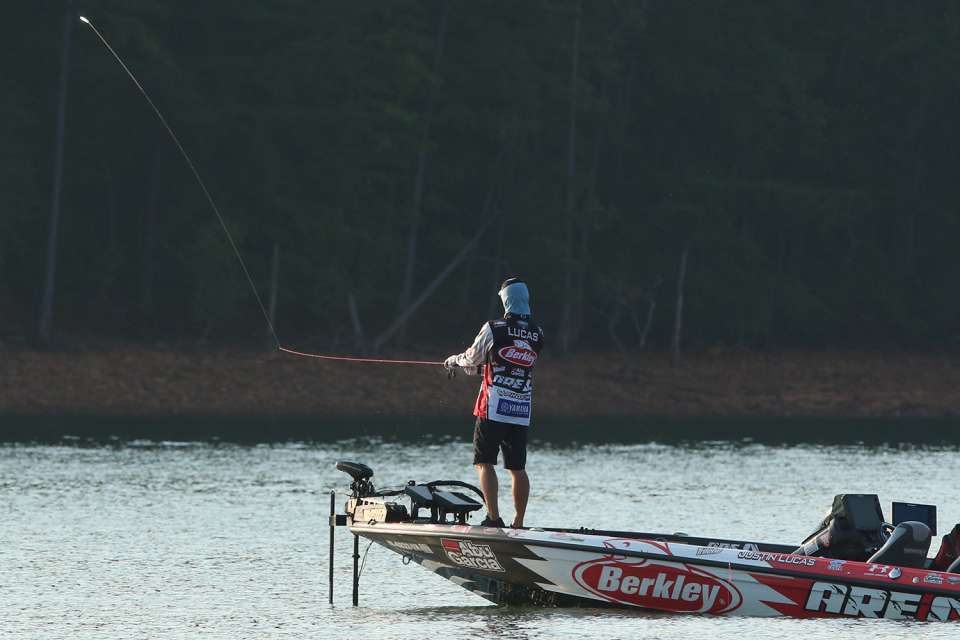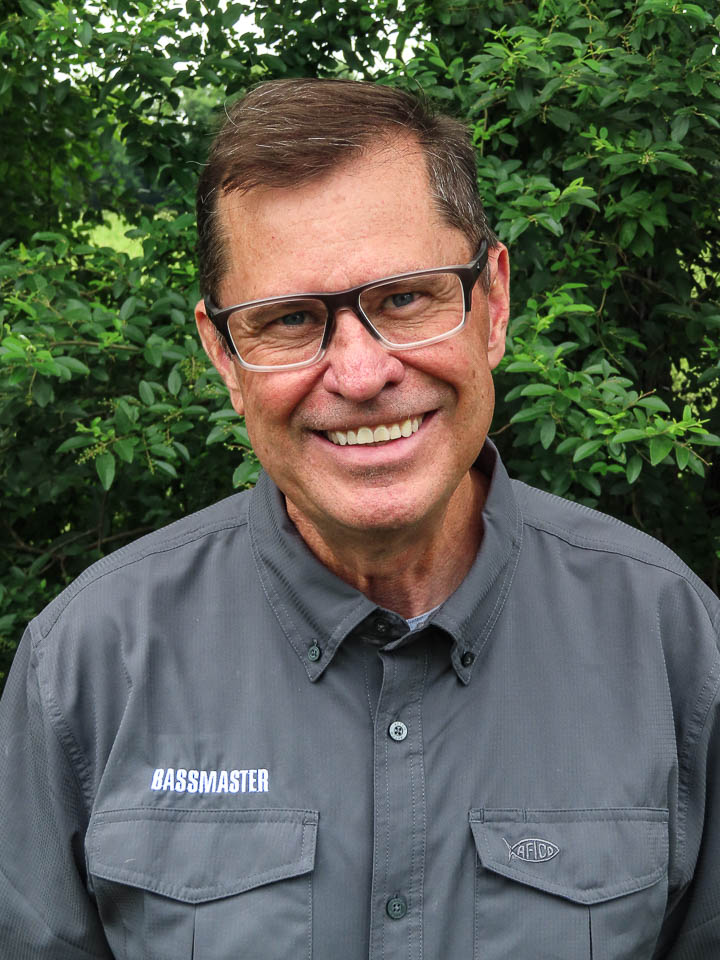
YOUNG HARRIS, Ga. — Put the top 50 professional anglers on the same lake, using the same lure type, and you have the perfect learning scenario for the average angler.
That is the case at the Toyota Bassmaster Angler of the Year Championship. The final Bassmaster Elite Series tournament of the season began Thursday and concludes on Sunday.
The hands-down lure choices on Lake Chatuge are topwaters. And all day long, not just early in the morning during low light. Sunny skies, calm winds and slack waters are the prevailing conditions. All go against the textbook conditions for topwater fishing.
The abundance of blueback herring is the reason why. Throughout the 7,500 acres of the north Georgia impoundment is an overabundance of the landlocked saltwater baitfish. By their open-water, nomadic nature they stay on the move. Coincidentally so do their primary predator. That is the spotted bass, also an open-water species that spends a lot of time searching for their favorite source of food. The approaching fall season with shorter days, cooler temperatures has stimulated the biological clocks of the bluebacks and bass.
Based on the above scenarios here are topwater tactics you can use this fall on your bass fishing trips.
James Elam: All about the bait
James Elam leads the tournament with 33 pounds, 8 ounces, including a limit weighing 16-10 caught on Friday. Ironically, the Oklahoma angler admits topwater fishing is outside his angling wheelhouse.
“I’m a drop shot, offshore kind of guy,” he said. “And even though spotted bass are on the bottom, holding to brushpiles, they won’t even look at a dropshot rig.”
The reason why is the bass are looking up in search for passing blueback herring.
“In the fall all these fish care about are baitfish, and here it’s shad but mostly blueback herring,” he explained.
“Normally any other time of the year a cloudy, windy day is the best case scenario for a topwater bite,” he continued. “Here, when the herring (and baitfish) get in the upper water column the bass can go up there and trap them.”
Elam’s choice for a topwater bait is a soft plastic jerkbait with a treble hook added for better hooking ratios. On Friday two of his key fish were only hooked on the treble hook.
In yet another atypical topwater scenario, the best time of day for the bite is under sunny, calm conditions.
“The bass can see really far in the clear water,” said Elam. “You can make a long cast to a brushpile on the bottom in 30 feet of water, and they’ll come up and get the topwater.”
After repeatedly attempting to get bass to bite his dropshot rig earlier in the tournament he gave it up in favor of a topwater pattern.
Jacob Wheeler: Suspended savvy
Behind Elam in second place with 31-5 is Jacob Wheeler. He is one of the tour’s best offshore anglers and is a threat to win the tournament. Ironically, like Elam, Wheeler’s expertise is deepwater bass relating to structure.
“It’s a weird thing because all these fish are doing is looking up,” he said. “It can be flat calm, sunny, the worse time to throw a topwater and you can catch them.”
Wheeler said the nomadic nature of the herring has the bass on the move.
“The bass are suspended, not always on the bottom, because they are following the herring,” he explained. “A lot of times the bass are in 10 feet over a 40-foot bottom and you can call them up with a topwater.”
Chris Lane: Clear water is key
Chris Lane holds down third place with 29-8. His reason for throwing a topwater all day long is the crystal clear water on Chatuge.
“Clear water is the biggest thing when you are throwing topwaters,” he said. “If the bass can see the bait, and here they can from far away, you have a better shot at catching them.”
Lane, a lifelong topwater specialist, is using a wakebait in the morning, and then switches to a River2Sea Whopper Plopper. He makes the switch to the faster moving bait as the sun adds even more clarity to the water column. The bass’ sight is improved even more to stimulate the feeding action.
Lane, who made his first trip here this week, dialed into the bite after seeing schooling action erupt on the main points. All he did was add GPS waypoints to the schooling locations and make a rotation of the areas during the tournament.
Justin Lucas: Relating to cover
Justin Lucas is fifth with 27-2 and has all but secured his fate as the 2018 Toyota Bassmaster Angler of the Year. Like everyone else, he recognizes the bass are looking up, not down, in search of their source of food.
“As the day progresses the blueback herring move up toward the surface,” he said. “The bass know that and set up in the tops of the brushpiles to see and then ambush the bait.”
Lucas discovered the bass indeed hold on the brushpiles, move to the tops and also spread out as the day goes on.
“That makes a topwater the only choice. For him that’s the new Berkley Cane Walker, a noisy popper/walking style bait with an aerodynamic shape meant for long casts.
“Making long casts is key because you need to cover as much water as possible,” he added. “You can cover more water and work it over multiple brushpiles on the bottom.”
Brandon Palaniuk: Crankbait theory
You might say Brandon Palaniuk is applying crankbait tactics to his topwater strategy.
“It’s almost like the reverse of crankbait fishing because the bass are still relating to the bottom contours, the fish highways,” he explained. “The bass are following the ditches to the points and along the way they stage on brushpiles and on the bottom irregularities like rockpiles.”
Palaniuk follows those fish highways to the points where the bass ultimately feed, although that can happen anywhere along the route. When they do he’s ready with a topwater.
“The key to it all is normally the fish are feeding nearer the bottom,” he said. “Here, with the water so clear, they are looking up.”
More sun means improved visibility. As noted by the other pros, that expands the strike zone since the bass can see the baitfish from longer distances. And of course, lures.

